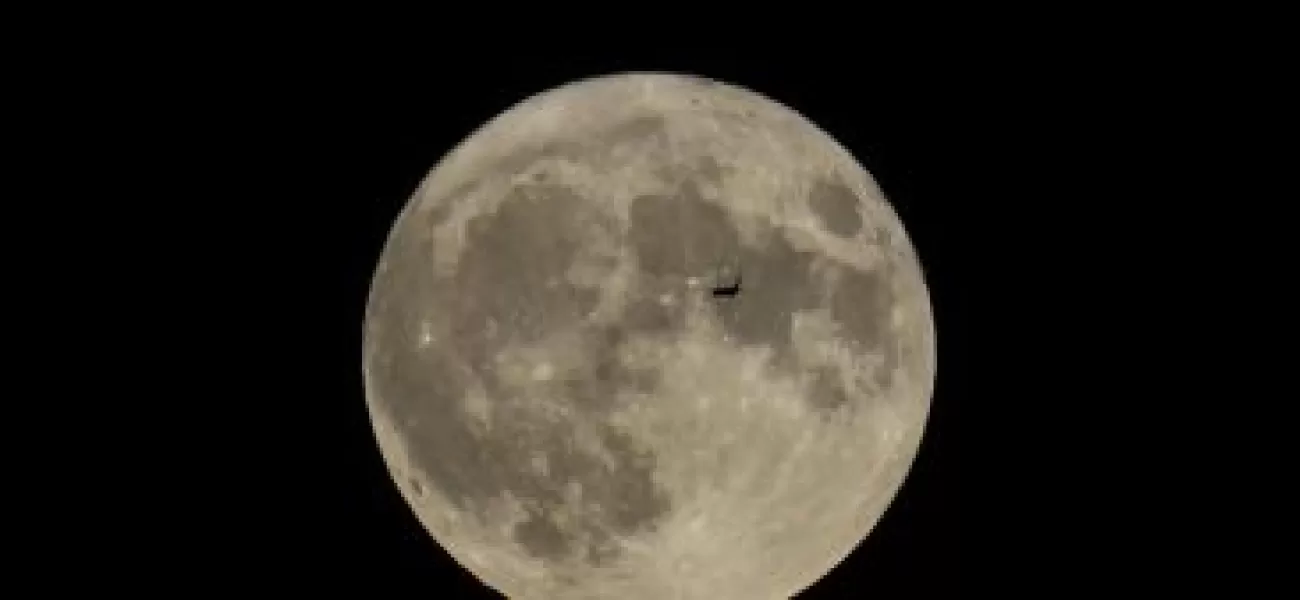Moon cave confirmed for sheltering future astronauts, scientists say.
Scientists discover cave on moon, near Apollo 11 landing site, and believe there could be more for future astronauts to explore.
July 15th 2024.

In a recent discovery, scientists have confirmed the existence of a cave on the moon, located not far from the historic landing site of Neil Armstrong and Buzz Aldrin 55 years ago. This exciting news has sparked speculation that there could be hundreds more caves on the moon that could potentially house future astronauts.
Led by an Italian team, researchers reported on Monday that there is evidence of a large cave near the Sea of Tranquility, just 250 miles from the Apollo 11 landing site. This particular cave is accessible from the deepest known pit on the moon, which, along with over 200 others, was formed by the collapse of a lava tube.
To make this discovery, the team analyzed radar measurements taken by NASA's Lunar Reconnaissance Orbiter and compared them to lava tubes found on Earth. Their findings were published in the journal Nature Astronomy. However, the scientists note that the radar data only reveals the initial part of the cave, estimating it to be at least 130 feet wide and several yards long, if not more.
Lead researchers, Leonardo Carrer and Lorenzo Bruzzone from the University of Trento, expressed their excitement in an email, stating that lunar caves have been a mystery for over 50 years and it was thrilling to finally prove the existence of one.
Further studies have shown that most of these pits are located in the moon's ancient lava plains. It is also possible that there are caves at the moon's south pole, which is the planned location for NASA's upcoming astronaut landings later this decade. These permanently shadowed craters are believed to contain frozen water, which could provide essential resources for future missions, such as drinking water and rocket fuel.
During NASA's Apollo program, 12 astronauts successfully landed on the moon, with Armstrong and Aldrin being the first on July 20, 1969. The recent findings suggest that there could be hundreds of pits and thousands of lava tubes on the moon, which could serve as natural shelters for astronauts, protecting them from cosmic rays, solar radiation, and micro-meteorite strikes.
The team also notes that building habitats from scratch on the moon would be a time-consuming and challenging task, even with the potential need to reinforce the cave walls to prevent collapses. The rocks and other materials found within these caves, untouched by the harsh surface conditions, could also provide valuable insights into the moon's evolution and its volcanic activity.
This groundbreaking discovery not only presents potential benefits for future space exploration but also offers a unique opportunity for scientists to better understand the moon's history and formation. It is an exciting time for space exploration, and these findings only add to our fascination and curiosity about our closest celestial neighbor.
Led by an Italian team, researchers reported on Monday that there is evidence of a large cave near the Sea of Tranquility, just 250 miles from the Apollo 11 landing site. This particular cave is accessible from the deepest known pit on the moon, which, along with over 200 others, was formed by the collapse of a lava tube.
To make this discovery, the team analyzed radar measurements taken by NASA's Lunar Reconnaissance Orbiter and compared them to lava tubes found on Earth. Their findings were published in the journal Nature Astronomy. However, the scientists note that the radar data only reveals the initial part of the cave, estimating it to be at least 130 feet wide and several yards long, if not more.
Lead researchers, Leonardo Carrer and Lorenzo Bruzzone from the University of Trento, expressed their excitement in an email, stating that lunar caves have been a mystery for over 50 years and it was thrilling to finally prove the existence of one.
Further studies have shown that most of these pits are located in the moon's ancient lava plains. It is also possible that there are caves at the moon's south pole, which is the planned location for NASA's upcoming astronaut landings later this decade. These permanently shadowed craters are believed to contain frozen water, which could provide essential resources for future missions, such as drinking water and rocket fuel.
During NASA's Apollo program, 12 astronauts successfully landed on the moon, with Armstrong and Aldrin being the first on July 20, 1969. The recent findings suggest that there could be hundreds of pits and thousands of lava tubes on the moon, which could serve as natural shelters for astronauts, protecting them from cosmic rays, solar radiation, and micro-meteorite strikes.
The team also notes that building habitats from scratch on the moon would be a time-consuming and challenging task, even with the potential need to reinforce the cave walls to prevent collapses. The rocks and other materials found within these caves, untouched by the harsh surface conditions, could also provide valuable insights into the moon's evolution and its volcanic activity.
This groundbreaking discovery not only presents potential benefits for future space exploration but also offers a unique opportunity for scientists to better understand the moon's history and formation. It is an exciting time for space exploration, and these findings only add to our fascination and curiosity about our closest celestial neighbor.
[This article has been trending online recently and has been generated with AI. Your feed is customized.]
[Generative AI is experimental.]
0
0
Submit Comment





